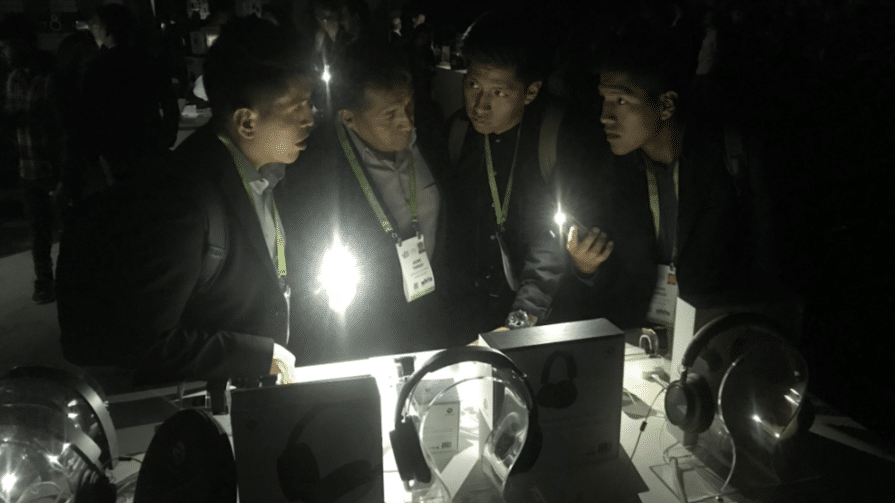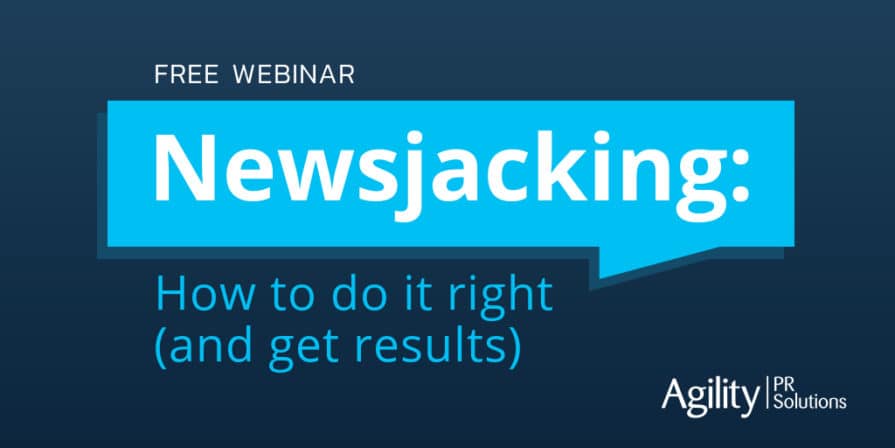The following is a taste of what we learnt on March 21 when David Meerman Scott presented his webinar, Newsjacking: How to do it right (and get results).
As journalists scramble to cover breaking news, the basic facts— the who, what, when, where—are often easy to find. They’re what go in the first paragraph of any news story.
The challenge for reporters is to get the “why” and the implications of the event. Journalists want to quote someone in the story and reveal an inside view. All this is what goes in the second and subsequent paragraphs. The PR person’s goal with newsjacking is to own the second paragraph of a story.
Newsjacking grows business.
It’s a technique used by many PR pros to actually influence sales in a measurable way. And after all, isn’t that the way PR is heading, toward measurement?
If you are clever enough to react to breaking news very quickly – providing credible second-paragraph content in a blog post, tweet, or media alert that features the keyword of the moment – you may be rewarded with a bonanza of media attention.
Mitch Jackson is a senior partner in the California law firm Jackson & Wilson. It’s an established firm, with local lawyers, judges, and past clients frequently referring cases to them.
Even though they have plenty of business, Mitch writes a blog where he comments on the legal aspects of stories in the news. And he gets tons of attention as a result. His popularity (rd: authority) has translated into more than 50,000 Twitter followers.
When news was breaking around football’s growing problem with brain injuries, Mitch published a post: Litigation Forces NFL to Better Protect Players- Hail to Our Growing Awareness of Traumatic Brain Injury. This sort of post generates interest in the media who then quote him in their stories.
Many people and organizations tell me that newsjacking just isn’t for them. They say their business is different.
I bet they wouldn’t think that it could work for a law firm either.
“Newsjacking has allowed our law firm to expand its sphere of influence from local to global,” Mitch says. “Our newsjacking efforts have resulted in expanded audiences and relationships we never before thought were possible. Interviews, commentary, and in the end, new clients and cases, are the happy result of our newsjacking efforts.”
Newsjacking is about speed.
For example, the massive Consumer Electronics Show in Las Vegas in January 2018 experienced a power outage. Crazy, right? All those gadgets and games gone dark! Ha! You can’t make this stuff up.
This, of course, was fodder for real-time commentary, newsjacking, and powerful thoughts about the people in Puerto Rico who had been without power for months.
The outage initially prompted many of the 180,000 people attending the show to simply report what was happening. The best of these reports, the ones that were shared on social media, included photos of the scene like this one from Nathan O’Neal, a TV journalist for News 3 Las Vegas.

Source: Nathan O’Neal
I saw many tweets that referenced Hurricane Maria, regarded as the worst natural disaster on record in Puerto Rico. Four months after the fact, many people are still without power. The outage at CES was a great opportunity to remind people that those in Puerto Rico are still suffering.
Who gives a damn about #CESblackout.
50% of Puerto Rico has no power after 4 months.
50% of Puerto Rico has no power after 4 months.
50% of Puerto Rico has no power after 4 months.
50% of Puerto Rico has no power after 4 months.
50% of Puerto Rico has no power after 4 months.— Steve Feldman! (@sfeldman89) January 10, 2018
And I totally love this tweet from Intel. Since power was out at their booth, they invited a young violinist to play for the bored attendees. The caption is fantastic: “The human spirit never loses its power.”
The human spirit never loses its power. #CESblackout @thisishaana pic.twitter.com/ECUcm0lGKE
— Intel (@intel) January 10, 2018
ISPN, a network service company, was very clever with the image of a flashlight. Because this has nothing at all to do with what their company does, it got a bunch of attention.
Hottest gadget at #CES2018 right now! #CESBLACKOUT pic.twitter.com/74JD77D59C
— ISPNtweets (@ISPNtweets) January 10, 2018
Each of these tweets earned more than 100 retweets, proving that newsjacking works.
And, of course, I got involved in the action too.
My own blog post about the newsjacking of the power outage, which served as my own newsjacking, succeeded in getting me into a story in Inc.: The No-Cost Marketing Technique that Can Put Your Brand in the Spotlight.
How about that for meta? The newsjacking pioneer newsjacking with a post about newsjacking!
Anybody can newsjack. It’s easy. But you’ve got to be quick.
Whenever there is a hot story in the news, you have an opportunity to create and publish original content that the media will find and cover, thereby giving you a media boost.
The bottom line is this: newsjacking gets you ink. And whether you’re the littlest fish in the sea or the industry blue whale, bonus coverage is bonus coverage.
To learn waaaaaaay more about newsjacking and how it can transform the way you think about and do public relations, watch our free webinar with David Meerman Scott, Newsjacking: How to do it right (and get results).








